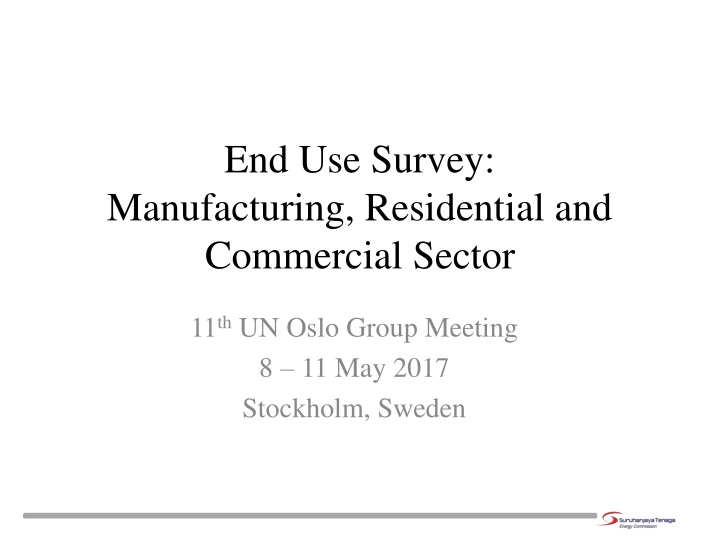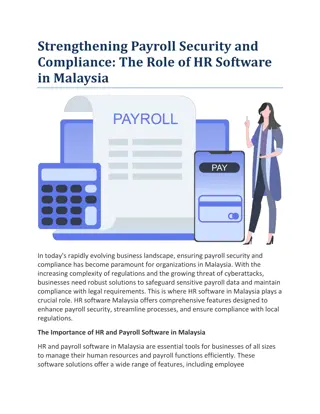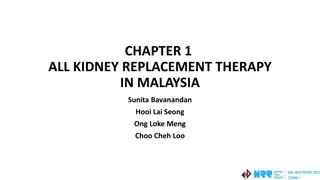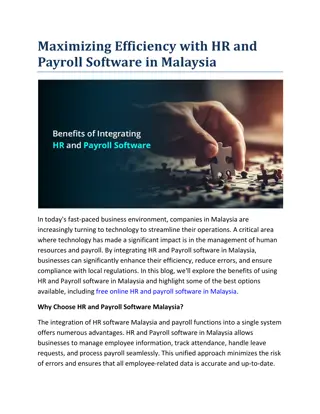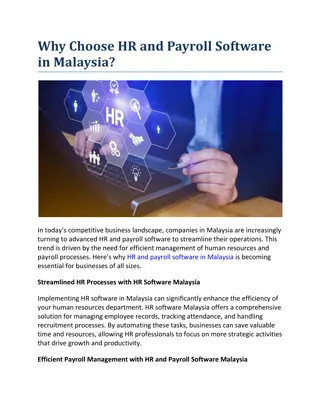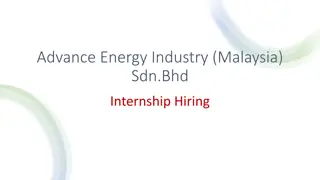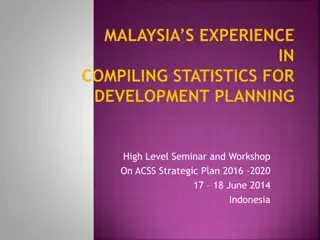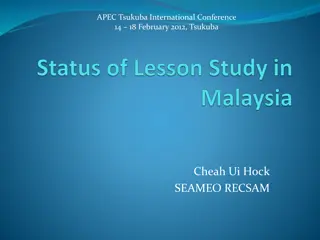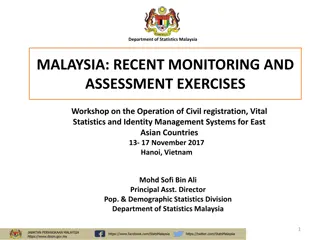National Energy Balance Report in Malaysia
The National Energy Balance (NEB) report in Malaysia serves as a comprehensive statistical publication that covers energy supply, transformation, and final usage. It outlines the role of Suruhanjaya Tenaga (ST) in providing accurate energy data nationally and internationally through various cooperation arrangements with agencies like the IEA and ASEAN Centre for Energy.
Download Presentation

Please find below an Image/Link to download the presentation.
The content on the website is provided AS IS for your information and personal use only. It may not be sold, licensed, or shared on other websites without obtaining consent from the author.If you encounter any issues during the download, it is possible that the publisher has removed the file from their server.
You are allowed to download the files provided on this website for personal or commercial use, subject to the condition that they are used lawfully. All files are the property of their respective owners.
The content on the website is provided AS IS for your information and personal use only. It may not be sold, licensed, or shared on other websites without obtaining consent from the author.
E N D
Presentation Transcript
End Use Survey: Manufacturing, Residential and Commercial Sector 11thUN Oslo Group Meeting 8 11 May 2017 Stockholm, Sweden
Outline Introduction National Energy Balance Energy Flow Chart, 2015 Manufacturing Survey Residential Survey Commercial Survey Way Forward and Conclusions
Introduction The National Energy Balance (NEB) report is an extension of Suruhanjaya Tenaga / Energy Commission s (ST) role from regulator of electricity and gas supplies to the main reference point for energy data in Malaysia. A complete statistical publication for energy supply and demand of the nation, it is based upon an energy balance format using similar energy units for all reported data NEB covers three major areas, namely the Energy Supply, Transformation and Final Usage - Including natural gas, crude oil, petroleum products, coal and coke, electricity, hydropower and renewable energy With this extended role, ST has formed various cooperation arrangements, to supply monthly, quarterly and annual energy data to the relevant agencies such as the International Energy Agency (IEA), International Energy Forum Secretariat (IEFS), United Nations Statistics Division (UNSD), The Institute of Energy Economics, Japan (IEEJ), Asia Pacific Economic Cooperation (APEC) and ASEAN Centre for Energy (ACE). This cooperation demonstrates ST s commitment in providing accurate information while providing an opportunity to further enhance the Commission s capacity and expertise in related areas.
National Energy Balance Currently, about 70 data providers Divided into fuel types ; oil, gas, electricity and coal In quarterly basis based on region Questionnaire based on energy balance format Collected via email, fax and postage Primary and secondary sources Common unit of measurement based on fuel types
Manufacturing Survey A survey was conducted with 520 manufacturing companies in Peninsular Malaysia to understand the energy consumption pattern of manufacturing industry in Peninsular Malaysia. Monthly data of energy consumption was collected for the year 2010 to 2013 for eight types of energy; electricity, natural gas, petrol, diesel, fuel oil, LPG, kerosene and coal Manufacturing industry sub-sectors included are; Iron and Steel, Chemical (including Petro- Chemical), Non Ferrous Metals, Non Metallic Mineral Products, Transportation Equipment, Machinery, Food, Beverages and Tobacco, Pulp, Paper and Printing, Wood and Wood Products, Textiles and Leather and Not Elsewhere Specifies (Industry) This is in accordance to the breakdown of the manufacturing sub-sectors by the International Energy Agency (IEA) andAPEC format of classification of the industrial sector.
Residential Survey Energy Commission has successfully conducted a survey with 2,000 households in Peninsular Malaysia with the aim to have an in-depth understanding of energy consumption pattern within households. There are many variables and factors that affect a household s energy consumption of which were not properly identified before. This survey enabled us to have a better view of where, when and how the energy is consumed within households. The number of samples is calculated based on the actual number of households in Malaysia. Hence, 2,000 households were selected across Peninsular Malaysia for this survey. The samples were broken down to four (4) main regions, namely Central, South, East Coast, and North, and then further broken down to ten (10) types of houses. The energy consumption for each household is categorised into fuel types (natural gas, LPG, kerosene and electricity) and five (5) end-uses as described by the IEA (International Energy Agency). Overall, electricity, LPG and natural gas are the major form of energy used in households in Peninsular Malaysia, where electricity accounted for more than 80% of energy consumption. Electricity consumption is distributed evenly among the four regions of Peninsular Malaysia, whereas LPG showed a slightly bigger contribution from the central region. In terms of end-uses, appliances have the biggest share in energy consumption, followed by air- conditioning system, cooking, lighting, and water heating. Appliances category covers a wide range of item which explains the high percentage of appliances in household s energy consumption.
Conclusions Sample size is small and not reflect the real population Limited budget Coverage only in Peninsular Malaysia Consultant experience is very important No secondary source to benchmarking the survey results Some of the results is not make sense and need some modification to reflect the true situation Need to have expert judgement before adopting the survey results.
Thank You www.meih.st.gov.my
